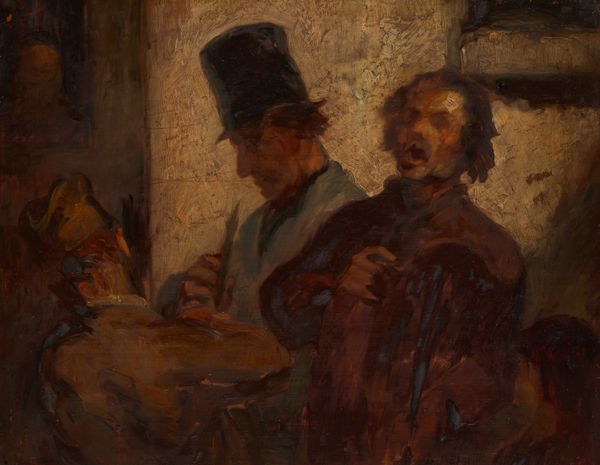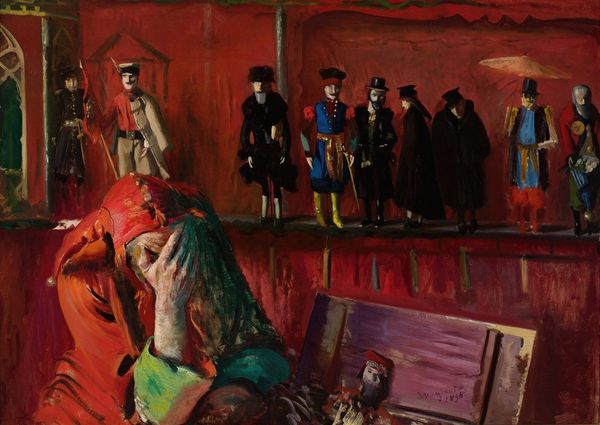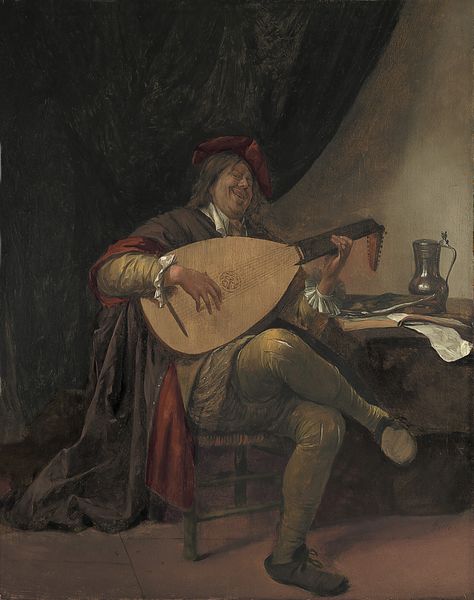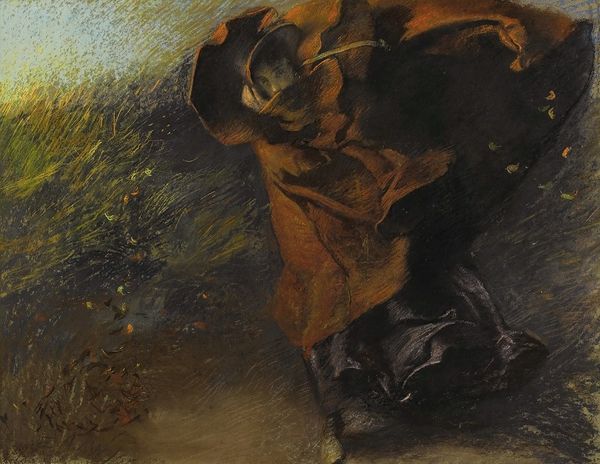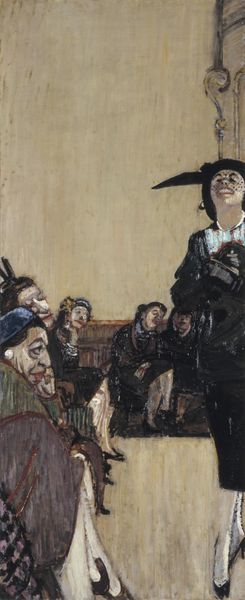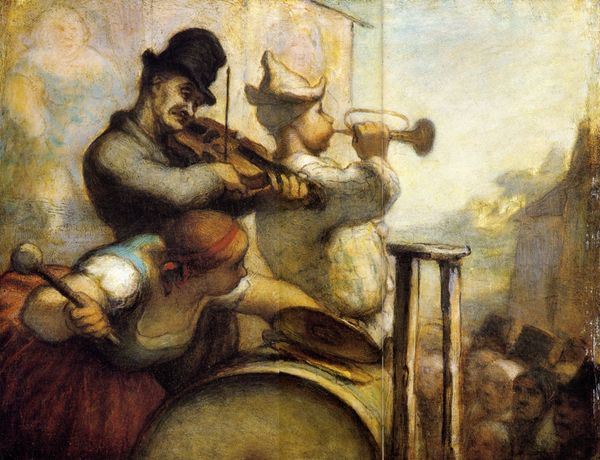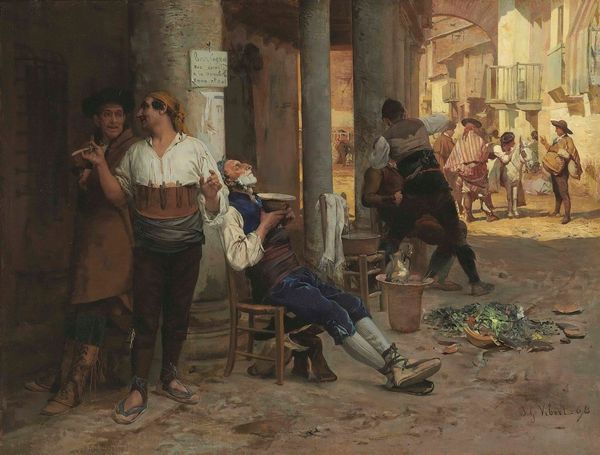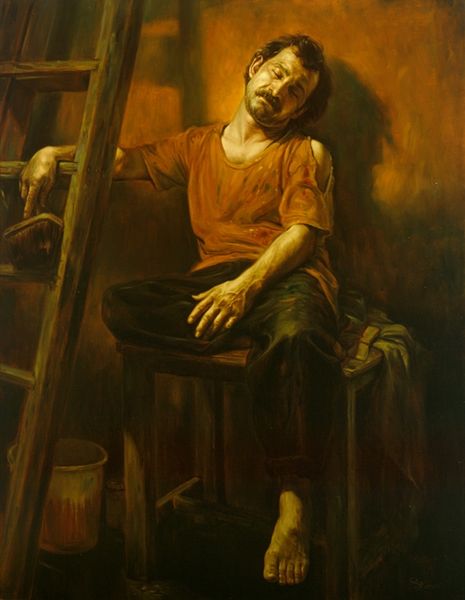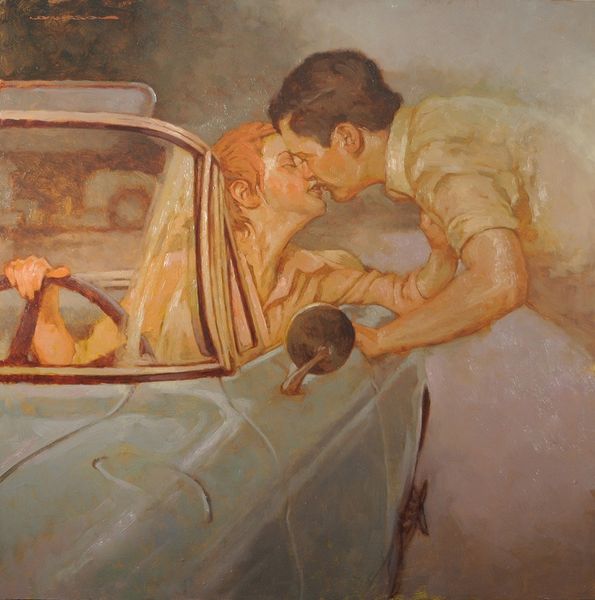
Copyright: Modern Artists: Artvee
Curator: Here we have Norman Rockwell's "Home Sweet Home," created in 1923 with oil paint. Editor: It’s got this… I don’t know, operatic yearning to it. The lighting and the open mouth make the guy look completely caught up in his own emotions. The accordion is the center stage prop and the parrot, maybe his captive audience? Curator: Rockwell really mastered accessible narrative. Note the condition of his clothing—the frayed edges speak to the labor and the economics of life at sea. And observe the accordion, this would have been a mass-produced instrument in the 1920s, reflecting the growing availability of music and entertainment for the working class. Editor: It’s fascinating, this mix of personal expression with manufactured comfort. Like he’s squeezing joy out of an object intended for everyone. Maybe the parrot represents the artist observing, slightly cynical amidst the performance? I’m picturing this piece was perhaps comissioned as cheap wall art that aimed at appealing to everyone. Curator: You know, it’s difficult to look past how romantic the era seemed to find sea life—as cheap wall art to adorn middle-class living rooms. And consider Rockwell’s process itself, meticulously planned and executed for maximum emotional impact. His labor involved not only painting but also orchestrating scenes, reflecting the industrialized image-making processes gaining traction at the time. Editor: But still, he captured something real here. A sense of profound isolation even in communal experience. The barefoot almost feels defiant against the cold wooden deck; an unexpected touch of vulnerability to the entire composition. Curator: His commitment to realism, particularly when showing how readily available things can be acquired and used to enjoy life for just a few coins, underscores his critical view of artistic value, one where mass-produced and handmade aren’t necessarily on opposite sides. Editor: Agreed. Rockwell reminds us that "art" can exist within the everyday. This moment he immortalized is a complex blend of emotions, and materials, questioning our easy categorization of anything or anyone.
Comments
No comments
Be the first to comment and join the conversation on the ultimate creative platform.

